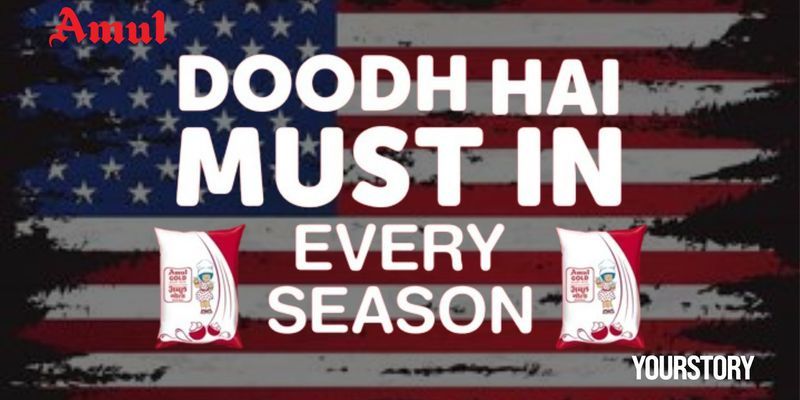
“Amul Dhoodh Piyega Ab America!” The legacy dairy distributors of India and the U.S. have partnered to promote and distribute “fresh milk” by Amul in the US East Coast and Midwest markets.
It’s the first time the supplies of the brand stepped outside the bounds of India and ventured into a foreign market where milk consumption is declining. Will this result in product differentiation or will it dampen the bold move?
Why the Move into the U.S.?
Amul made a calculated decision to enter the U.S. market by introducing their new product line in order to reach consumers who belong to the Indian and Asian diaspora. It also demonstrates the brand’s commitment to provide customers with genuine Indian dairy products while also satisfying the wide range of tastes found in the international market.
Though the products were since available in the markets it was via an import and export system, the partnership with the Michigan Milk Producers Association reduces the surcharge of duties and helps in expanding the product base available across the U.S.
What is Amul Introducing?
Amul Shakti (4.5% milk fat), Amul Gold (6% milk fat), Amul Taaza (3% milk fat), and Amul Slim n Trim (2% milk fat) are among the available variations. These goods will satisfy the tastes of the Indian diaspora by being easily accessible at reputable Indian grocery stores located throughout the US East Coast and Midwest.
Other than milk, it’s looking to expand its product range to butter, cheese, and paneer to look after the demands of the Asian diaspora.
The Amul Girl in the U.S.
To successfully augment the entry of the brand into the markets, Amul is planning on rolling out mass media campaigns featuring the iconic Amul girl. It’ll run the campaign “Doodh Doodh Piyo Glass Full Doodh” to nurture the nostalgic connections of millions in the country and strengthen the brand presence in the global markets.
The Move is Not Without Challenges
Milk utilisation has diminished by 47% beginning around 1975, while milk creation has expanded by 96%. The US is likewise not as much of a milk consumer as India, so the US market could be extreme for Amul. Amul’s presence could escalate rivalry in the US dairy market, which is esteemed at $60 billion. This could prompt more cutthroat costs and a more extensive assortment of choices for buyers.
Plant-based items Americans will pay something else for elective refreshments like coconut, oat, soy, and almond milk, which are pricier than ordinary milk. These plant-based items are acquiring ubiquity despite their greater expense. Items like milk normally have restricted evaluating power in business sectors. This implies that unless Amul can adequately separate themselves, their item’s costs could be trapped in a descending pattern. Amul is sure of getting the best cost of milk in the US since selling an item that isn’t accessible or never has been sold in the US market, which is milk with 6% milk fat, Amul Gold.
Future Outlook for the Indian Dairy Giant in New Markets
Customers in the US are showing an inclination for organically obtained natural things, including milk against mass manufacturing. This furnishes Amul with a chance to situate itself as an exceptional decision for those looking for options in contrast to customary milk.
Whether the move was a genius one or greedy to become a global seller will only be told as time unfolds.
Edited by Rahul Bansal










![Read more about the article [Funding alert] After Deepika Padukone, rapper Raftaar invests in FrontRow](https://blog.digitalsevaa.com/wp-content/uploads/2021/08/Image9pj9-1628086692712-300x150.jpg)